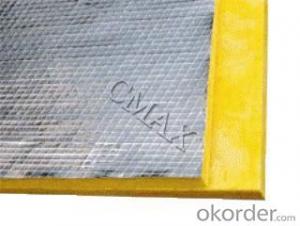Aluminum foil is a versatile material that has found its way into various applications, from cooking to construction. One of its most intriguing uses is in the realm of heat reflection and insulation enhancement. Let’s dive into the world of aluminum foil facing and explore its benefits, applications, and how it can make a difference in our everyday lives.
The Science Behind Aluminum Foil Facing
Aluminum foil facing is a layer of aluminum that is applied to a surface to reflect heat and enhance insulation. The reflective properties of aluminum make it an excellent conductor of heat, but when used as a reflective layer, it can also act as a barrier to heat transfer. This dual nature of aluminum foil is what makes it so effective in various applications.
Reflecting Heat: A Closer Look
When it comes to heat reflection, aluminum foil facing can be a game-changer. It can be used in various settings, from residential homes to commercial buildings. In homes, it can be applied to walls or roofs to reflect sunlight and reduce the amount of heat that enters the building. This not only helps in keeping the indoor temperature comfortable but also reduces the load on air conditioning systems, leading to energy savings.
In commercial buildings, aluminum foil facing can be used in HVAC systems to reflect the heat generated by the system back into the space, improving the overall efficiency of the system. It can also be used in industrial settings to protect equipment from excessive heat, ensuring a longer lifespan and reducing maintenance costs.
Enhancing Insulation: How It Works
Insulation is crucial for maintaining a comfortable indoor environment and reducing energy consumption. Aluminum foil facing can significantly enhance the insulation properties of a material. When applied to insulation materials, it creates an additional barrier that reflects heat, preventing it from escaping or entering the insulated space.
This can be particularly beneficial in cold climates, where heat loss can be a significant issue. By reflecting heat back into the room, aluminum foil facing can help maintain a warmer environment and reduce the need for additional heating. Similarly, in warmer climates, it can help keep the indoor temperature cooler by reflecting heat away from the insulated space.
Applications Beyond the Obvious
While the primary purpose of aluminum foil facing is to reflect heat and enhance insulation, it has found its way into other applications as well. For instance, it can be used in the automotive industry to reflect heat from the engine compartment, protecting sensitive components and reducing the risk of heat-related damage.
In the food industry, aluminum foil facing can be used in packaging to preserve the freshness and quality of food products. The reflective properties of aluminum foil help in maintaining a consistent temperature inside the package, ensuring that the food remains fresh for a longer period.
The Environmental Impact of Aluminum Foil Facing
One of the most compelling aspects of using aluminum foil facing is its environmental benefits. Aluminum is a recyclable material, and using it in construction and other applications can contribute to a circular economy. By reflecting heat and enhancing insulation, it also helps in reducing energy consumption, which in turn reduces greenhouse gas emissions.
DIY Projects with Aluminum Foil Facing
For those who enjoy DIY projects, aluminum foil facing can be a fun and practical material to work with. Whether it’s insulating a shed, creating a reflective barrier for a greenhouse, or even using it in home decor, the possibilities are endless. It’s easy to cut, shape, and install, making it an ideal material for a wide range of projects.
The Future of Aluminum Foil Facing
As we continue to seek innovative solutions for energy efficiency and sustainability, the use of aluminum foil facing is likely to grow. Its versatility, effectiveness, and environmental benefits make it an attractive option for various industries and applications.
In conclusion, aluminum foil facing is more than just a material for cooking or wrapping food. It has the potential to make a significant impact on our lives by reflecting heat, enhancing insulation, and contributing to a more sustainable future. So, the next time you pick up a roll of aluminum foil, remember the incredible possibilities it holds beyond the kitchen.

